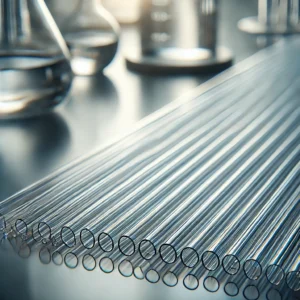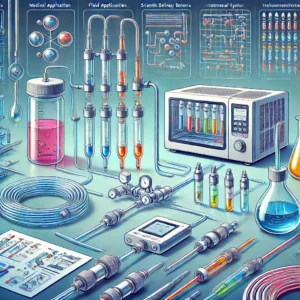“The Ultimate Quick Guide to Capillary Tubing: Features, Applications, and Benefits
Capillary tubing is actually an important component in numerous sectors, valued for its own accurate measurements, light in weight concept, and also ability to transport liquids and fuels in tiny quantities. Coming from health care tools to chilling units, capillary-tubing plays an important part in making sure efficiency and accuracy. In this thorough resource, we’ll check out capillary tubing, its own features, requests, as well as exactly how to maximize its abilities.
What is Capillary Tubing?

Capillary tubing describes thin-walled tubes along with a tiny interior size, normally ranging coming from 0.1 mm to a couple of millimeters. These pipes are created coming from products like stainless-steel, glass, plastic, or even copper, relying on their wanted make use of. The tiny diameter permits accurate control of liquid or fuel flow, creating capillary-tubing best for uses calling for precision and uniformity.
Key Features of Capillary Tubing
Micro-precision: Ensures particular liquid or even gasoline circulation.
Component variety: Available in metals, plastics, or glass for different applications.
Versatility: Easy to bend and also shape without weakening stability.
Corrosion protection: Especially in stainless-steel and also copper variants.
Temp tolerance: Suitable for harsh atmospheres, both cold and hot.
Benefits of Capillary Tubing

Capillary-tubing’s style as well as component properties provide a number of benefits, making it crucial in several industries.
1. Precision Flow Control
The little interior diameter allows exact command of fluids as well as gasolines, ensuring superior efficiency in delicate apps like research laboratory experiments or medical tools.
2. Space Efficiency
Capillary tubing’s small dimension enables its use in applications where area is actually restricted, such as microfluidics or even portable chilling units.
3. Component Versatility
Coming from stainless-steel for commercial usages to glass for laboratory settings, capillary-tubing is accessible in materials modified to diverse demands.
4. Resilience Along with corrosion-
resistant possibilities like stainless-steel and copper, capillary-tubing supplies durability also in rough settings.
5. Economical Solutions
Despite its own preciseness, capillary tubing is actually often an economical answer for fields needing controlled liquid or fuel transport.
Uses of Capillary Tubing

Capillary-tubing is used around different business as a result of its precision and also convenience. Here’s where it creates one of the most effect:
1. Clinical Devices
Catheters:
- For minimally invasive techniques.
Diagnostic Tools:
- Ensures specific fluid flow in blood analyzers.
Medication Delivery Systems:
- Used in mixture pumps for correct application.
2. Refrigeration and HVAC Systems
Development Devices:
- Controls cooling agent flow to sustain constant air conditioning.
Tension Equalization:
- Ensures body performance in HVAC units.
3. Lab Equipment
Chromatography:
- Separates chemical substance compounds along with precision tubing.
Analytical Instruments:
- Delivers precise liquid examples for screening.
4. Automotive Industry
Energy Systems:
- For exact fuel shot in high-performance motors.
Brake Systems:
- Transports gas liquids efficiently.
5. Industrial Manufacturing
Chemical Processing:
- Handles small quantities of chemicals safely and securely.
Automation:
- Used in pneumatically-driven and also gas systems for precision.
6. Microfluidics and Electronics
Semiconductor Manufacturing:
- Delivers ultra-pure chemicals.
Fiber Optics Coating:
- Ensures exact use of components.
How to Choose the Right Capillary Tubing

Deciding on the optimal capillary-tubing includes understanding your document requirements and matching them along with the ideal specs.
1. Determine Material Needs
- Stainless-steel: Ideal for stressful or even destructive environments.
- Copper: Excellent for refrigeration and HVAC bodies.
- Glass or even Plastic: Best for lab or even medical make use of.
2. Define Dimensions
- Pick the best inner dimension, outer dimension, and wall density based on circulation cost needs.
3. Assess Temperature and Pressure Tolerance
- Guarantee the tubing can handle the functional setting, consisting of excessive temps or stress.
4. Take Into Consideration Compliance Standards
- For health care or food-grade requests, make sure the tubing satisfies governing requirements like FDA or even ASTM specifications.
Read About : Surgical Tubing
Typical Challenges and Misconceptions
1. Blocking Issues
Small dimensions can lead to plugging or even maintained appropriately. Frequent cleansing as well as the use of filters can relieve this.
2. Perceived Fragility
While capillary tubing seems delicate, products like stainless-steel and copper make it extremely durable for asking for treatments.
3. Restricted Flow
Rate Some suppose capillary tubing is actually just suited for small functions. Having said that, its own precision makes it essential for requests where flow command is actually vital.
Pro Recommendations for Using Capillary Tubing
Match Tubing to Application: Select products as well as sizes customized to your certain requirements to make best use of efficiency.
Usage Precision Tools: Employ top quality cutting and fitting devices to stay clear of damage during the course of installation.
Keep Cleanliness: Regular cleaning protects against clogs, particularly in clinical or even logical uses. Screen Flow Rates: Use sensing units or determines to ensure regular procedure.
Consult Specialists: For intricate units, collaborate with professionals to design and also mount the tubing appropriately.
Frequently Asked Questions (FAQs).
Q1: What components are actually most often used for capillary-tubing?
Stainless-steel, copper, plastic, and also glass are actually well-liked products, chosen based upon the use’s needs for sturdiness, deterioration protection, or even versatility.
Q2: Can capillary tubing deal with high pressures?
Yes, especially stainless-steel capillary-tubing, which may deal with high pressures in commercial and health care treatments.
Q3: Is capillary tubing reusable?
In a lot of cases, capillary-tubing is recyclable if effectively cleansed as well as preserved. Having said that, some requests, like medical use, may call for single-use tubing for cleanliness explanations.
Q4: How perform I protect against obstructing in capillary tubing?
Regular cleaning, utilizing filters, as well as ensuring appropriate storage space may help avoid plugging.
Q5: Where can I obtain capillary tubing?
You may find capillary-tubing via industrial distributors, clinical equipment merchants, and online platforms focusing on research laboratory and also engineering items.
Conclusion:
Capillary-tubing is a keystone of precision engineering, delivering unparalleled accuracy and also adaptability. Whether in health care devices, chilling bodies, or research laboratory devices, its part in making certain productivity as well as accuracy can easily certainly not be overemphasized.
Understanding the properties, advantages, and applications of capillary-tubing permits you to create educated selections and also maximize its own use for your particular requirements. Ready to discover capillary tubing options? Share your tasks, questions, or feedback in the reviews below!